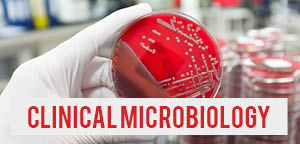Track Categories
The track category is the heading under which your abstract will be reviewed and later published in the conference printed matters if accepted. During the submission process, you will be asked to select one track category for your abstract.
This track deals with the inter disciplinary researches & developments in microbiology and public health. Generally, Microbes play an important role in balancing the health in the society. This session covers the wide area of advanced researches under Microbiology, Epidemiology, Public Health, Clinical Microbiology, Diagnostic Microbiology, Environmental Microbiology, Astro Microbiology, Agriculture Microbiology, Food Microbiology, Molecular Microbiology, Industrial Microbiology, Microbiome, Infectious Diseases and their preventive Measures, Medical Microbiology and many more related fields.
- Track 1-1Soil Microbiology Techniques
- Track 1-2Microbial Insecticides
- Track 1-3Strain Improvement
- Track 1-4Microbiota
- Track 1-5Public Health Studies
- Track 1-6Preventive measures for infectious diseases
- Track 1-7Treatment for HIV/ AIDS/ Ebola - Pathogenic Diseases
Applied Microbiology is the field of study where the microorganisms where used in the production of certain products like Antibiotics, enzymes, Food Products etc., for the benefit for the society. Applied microbiology is the study of the microbial world and the way it interacts with our own. It looks at how we can harness and utilize the powers of the microbes in areas ranging from biotechnology to pest control, to bio-refineries, to pharmaceutical applications. A wide range of microbial bioproducts is possible. This Applied Microbiology session deals with researches in relation with agriculture and soils, animals and animal health, biodefence, biotransformation, biodegradation and bioremediation, biotechnology, environment, food and beverages, medicine and public health, mycology, pharmacy, plants and plant health, probiotics and the intestine and water of all types, Food Microbiology, Molecular Microbiology, Industrial Microbiology, Enzymes, Antibiotics, Vaccines, Protein Production, Recombinant DNA Technology.
- Track 2-1Fermentation Industrial Microbiology
- Track 2-2Bacteriology
- Track 2-3Microbial Proteins
- Track 2-4Microbial Enzymes
- Track 2-5Biotransformation
- Track 2-6Nutraceuticals and Nutrigenomics
- Track 2-7Food Microbiology and Food Enzymology
Advances in Microbiology session deals with the latest researches and developments in microbial techniques, Microbial strain improvement, Microbial Engineering, Industrial Microbiology, Medical Microbiology, General Microbiology, Medical Entomology, Anatomy, Physiology, Biochemistry, Pathology, Forensic Medicine and Toxicology, Pharmacology, Community Medicine, Clinical Sciences (Medicine, Surgery, ENT, Orthopedics, Ophthalmology, Radiology,) Medical Biotechnology and Biological Sciences. Microbiology is the study of microorganisms and those being unicellular (single cell), multicellular (cell colony), or acellular (lacking cells) such as bacteria, viruses, archaea, fungi and protozoa. Microbiology encompasses numerous sub-disciplines including virology, parasitology, mycology, bacteriology. biochemistry, physiology, cell biology, ecology, evolution and clinical aspects of microorganisms, including the host response to these agents. The study of microorganisms impinges on all of biology, including geoscience. For many years, research using prokaryotes from both the Bacteria and Archaea domains as model systems has added to the understanding of physiological processes such as growth and metabolism. Thus, through understanding the physiology of prokaryotes, advances in ecology, evolution, and biotechnology have been made. This Session also covers sub sessions like
- Track 3-1Biosensor in Microbes
- Track 3-2Micro-fabrication
- Track 3-3Antibodies Production
- Track 3-4Agriculture Microbiology
Microorganisms plays an important role in our day today life, with those little creatures. The use of microorganism in large scale production of food and industrial products is being done worldwide. Polysaccharides, polyamides, polyesters and many other varieties of biopolymers are produced by many microorganisms. These are ranging from plastics to viscous solutions. Microorganisms are used in large scale manufacturing of vaccines against diseases like influenza flu, polio, BCG etc. with the evolution of sophisticated technology, identification of specific antigens is being done easily which further helps in development of vaccines with the help of microorganisms. They have used in food products, industries, pharma, Nanotechnology, Biotechnology, Food Technology, Agriculture, Drug Delivery, Medical technology, Microbial Engineering, Enzyme Production, Antibiotics Production, Vaccine Production and many more

Bioremediation is the process of using organisms to neutralize or remove contamination from waste. It is very important to understand that this form of waste remediation uses no toxic chemicals, although it may use an organism that can be harmful under certain circumstances. Bioremediation is a process used to treat contaminated media, including water, soil and subsurface material, by altering environmental conditions to stimulate growth of microorganisms and degrade the target pollutants. In many cases, bioremediation is less expensive and more sustainable than other remediation alternatives. Bioremediation works by providing these organisms with different materials like fertilizer, oxygen and other conditions to survive. This would help to break the organic pollutant at a faster rate. In other words, bioremediation can help to clean up oil spills. Bioremediation from an ecological perspective.
Microbial biodegradation is the use of bioremediation and biotransformation methods to harness the naturally occurring ability of microbial xenobiotic metabolism to degrade, transform or accumulate environmental pollutants, including hydrocarbons (e.g. oil), polychlorinated biphenyls (PCBs), polyaromatic hydrocarbons (PAHs), heterocyclic compounds (such as pyridine or quinoline), pharmaceutical substances, radionuclides and metals. Interest in the microbial biodegradation of pollutants has intensified in recent years and recent major methodological breakthroughs have enabled detailed genomic, metagenomic, proteomic, bioinformatic and other high-throughput analyses of environmentally relevant microorganisms, providing new insights into biodegradative pathways and the ability of organisms to adapt to changing environmental conditions. Biodegradation is the biologically catalyzed modification of an organic chemical's structure.

Modern biotechnology provides breakthrough products and technologies to combat debilitating and rare diseases, reduce our environmental footprint, feed the hungry, use less and cleaner energy, and have safer, cleaner and more efficient industrial manufacturing processes. Biotechnology is the broad area of science involving living systems and organisms to develop or make products, or "any technological application that uses biological systems, living organisms, or derivatives thereof, to make or modify products or processes for specific use. Biotechnology is all about harnessing the power of living cells and materials for use in environmental, diagnostic, pharmaceutical and agricultural industries. Biotechnology is all about using the raw ingredients of life to help solve society’s problems. It can also commonly be referred to as life sciences or genetic engineering, which involves exploiting cell and tissue culture technologies to produce lots of wonderful things. Depending on the tools and applications, it often overlaps with the (related) fields of molecular biology, bio-engineering, biomedical engineering, biomanufacturing, molecular engineering, etc
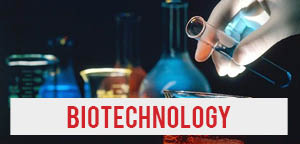
- Track 6-1Environmental Biotechnology
- Track 6-2Medical Biotechnology
- Track 6-3Agrobiotechnology
Environmental microbiology is the study of the composition and physiology of microbial communities in the environment. The environment in this case means the soil, water, air and sediments covering the planet and can also include the animals and plants that inhabit these areas. Environmental microbiology also includes the study of microorganisms that exist in artificial environments such as bioreactors Structure and activities of microbial communities, Microbial interactions and interactions with macroorganisms, Population biology of microorganisms, Microbes and surfaces (adhesion and biofilm formation), Microbial community genetics and evolutionary processes, (Global) element cycles and biogeochemical processes, Microbial life in extreme and unusual little-explored environments, Biofilm Engineering, pollution microbiology, microbially-influenced global changes, extremophiles and life in extreme and unusual little-explored habitats, microbes and surfaces, microbial interactions and interactions with plants, animals and non-living environmental factors, the structure, activities and communal behavior of microbial communities it also integrates with biotechnology

Enzyme technology broadly involves production, isolation, purification and use of enzymes (in soluble or immobilized form) for the ultimate benefit of humankind. In addition, recombinant DNA technology and protein engineering involved in the production of more efficient and useful enzymes are also a part of enzyme technology. Enzymes are the biocatalysts synthesized by living cells. They are complex protein molecules that bring about chemical reactions concerned with life. It is fortunate that enzymes continue to function (bring out catalysis) when they are separated from the cells i.e. in vitro. Basically, enzymes are nontoxic and biodegradable. They can be produced in large amounts by microorganisms for industrial applications. The biocatalysts (enzymes and cells) are used in multifarious ways in different field. Scientists has grouped the applications like therapeutic uses, analytical uses, manipulative uses, industrial purpose. It has the border range like food production, food processing and preservation, washing powders, textile manufacture, leather industry, paper industry, medical applications, and improvement of environment and in scientific research. Enzymes has produced in larger scale in Industries for various purposes they have converted into proteins, peptides, vitamins, antibodies, vaccines, antibiotics and many more. This session also covers Enzyme and Enzyme Technology applications, advantages and their advancements

Genetic engineering is the deliberate manipulation of DNA, using techniques in the laboratory to alter genes in organisms. Even if the organisms being altered are not microbes, the substances and techniques used are often taken from microbes and adapted for use in more complex organisms. Genetic engineering, also called genetic modification or genetic manipulation, is the direct manipulation of an organism's genes using biotechnology. It is a set of technologies used to change the genetic makeup of cells, including the transfer of genes within and across species boundaries to produce improved or novel organisms. New DNA is obtained by either isolating and copying the genetic material of interest using recombinant DNA methods or by artificially synthesising the DNA. A construct is usually created and used to insert this DNA into the host organism. Microbial genetics is a subject area within microbiology and genetic engineering. It studies the genetics of very small (micro) organisms; bacteria, archaea, viruses and some protozoa and fungi. This involves the study of the genotype of microbial species and also the expression system in the form of phenotypes.Using microbes, protocols were developed to insert genes into bacterial plasmids, taking advantage of their fast reproduction, to make biofactories for the gene of interest.Such genetically engineered bacteria can produce pharmaceuticals such as insulin, human growth hormone, interferons and blood clotting factors. Microbes synthesize a variety of enzymes for industrial applications, such as fermented foods, laboratory test reagents, dairy products and many more
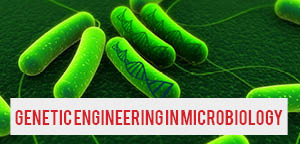
- Track 9-1Microbial Genetics
Industrial microbiology is a branch of biotechnology that applies microbial sciences to create industrial products in mass quantities. There are multiple ways to manipulate a microorganism in order to increase maximum product yields. Introduction of mutations into an organism many be accomplished by introducing them to mutagens. The manipulation of organisms in order to yield a specific product has many applications to the real world like the production of some antibiotics, vitamins, enzymes, amino acids, solvents, alcohol and daily products. Industrial microbiology can be applied for Medical purposes, Food Industry, Fermentation, Agriculture, Biopesticides, Wastewater management, Metabolic Engineering, Chemical applications, Pharmaceutical: develops novel, small-molecule drugs and medical devices

- Track 10-1Microbes in Alternative Energy
Infectious diseases are disorders caused by organisms — such as bacteria, viruses, fungi or parasites. Many organisms live in and on our bodies. They're normally harmless or even helpful, but under certain conditions, some organisms may cause disease. Some of the Infectious Diseases and the microorganisms are Anthrax, Acinetobacter, Aspergillus, Bird Flu, Botulism, Brucellosis, Bubonic Plague, C. Difficile, Campylobacter, Chagas Disease, Chikungunya, Cholera, Cyanophyta, Cyanobacteria, Cystitis, Dengue Fever, Ebola, Enterovirus, Gastroenteritis, Jaundice, Klebsiella, Lemierre's Syndrome, Leptospirosis, Listeria, Lyme Disease, Malaria, Measles, Middle East Respiratory Syndrome, Molluscum Contagiosum, Necrotizing Fasciitis, Norovirus, P. aeruginosa, Pinworms, Pyelonephritis, Rabies, Salmonella, Severe acute respiratory syndrome, Scabies, Sepsis, Staph/MRSA, Streptococcus, Tetanus, Thrush, Toxoplasmosis, Typhoid Fever, VRE, West Nile, Whooping Cough, Yellow Fever, Zika and some of the infectious diseases can be vaccinated
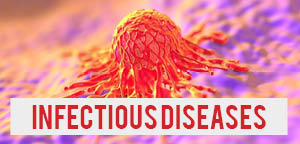
Medical microbiology, the large subset of microbiology that is applied to medicine, is a branch of medical science concerned with the prevention, diagnosis and treatment of infectious diseases. In addition, this field of science studies various clinical applications of microbes for the improvement of health. There are four kinds of microorganisms that cause infectious disease: bacteria, fungi, parasites and viruses, and one type of infectious protein called prion. Diagnosis of infectious disease is nearly always initiated by consulting the patient's medical history and conducting a physical examination. More detailed identification techniques involve microbial culture, microscopy, biochemical tests and genotyping. Other less common techniques (such as X-rays, CAT scans, PET scans or NMR) are used to produce images of internal abnormalities resulting from the growth of an infectious agent.
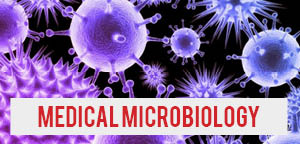
- Track 12-1Microbial Products
- Track 12-2Diagnostic Clinical Microbiology
- Track 12-3Cellular Microbiology
- Track 12-4Molecular Microbiology
Biofilm is an association of micro-organisms in which microbial cells adhere to each other on a living or non-living surfaces within a self-produced matrix of extracellular polymeric substance. Bacterial biofilm is infectious in nature and can results in nosocomial infections. Aggregate of microorganisms in which cells that are frequently embedded within a self-produced matrix of extracellular polymeric substances (EPSs) adhere to each other and/or to a surface. Biofilm formation is a multi-step process starting with attachment to a surface then formation of micro-colony that leads to the formation of three dimensional structure and finally ending with maturation followed by detachment. During biofilm formation many species of bacteria are able to communicate with one another through specific mechanism called quorum sensing. It is a system of stimulus to co-ordinate different gene expression. Bacterial biofilm is less accessible to antibiotics and human immune system and thus poses a big threat to public health because of its involvement in variety of infectious diseases. The cells within the biofilm produce the EPS components, which are typically a polymeric conglomeration of extracellular polysaccharides, proteins, lipids and DNA. Because they have three-dimensional structure and represent a community lifestyle for microorganisms, they have been metaphorically described as "cities for microbes". Biofilms may form on living or non-living surfaces and can be prevalent in natural, industrial and hospital settings. Microbes form a biofilm in response to various different factors, which may include cellular recognition of specific or non-specific attachment sites on a surface, nutritional cues, or in some cases, by exposure of planktonic cells to sub-inhibitory concentrations of antibiotics. When a cell switches to the biofilm mode of growth, it undergoes a phenotypic shift in behavior in which large suites of genes are differentially regulated

- Track 13-1Metabolic design
Microbial biotechnology is defined as any technological application that uses microbiological systems, microbial organisms, or derivatives thereof, to make or modify products or processes for specific use. Microbes (or microorganisms) are organisms that are too small to be seen by the unaided eye. They include bacteria, fungi, protozoa, microalgae, and viruses. Microbes live in familiar settings such as soil, water, food, and animal intestines, as well as in more extreme settings such as rocks, glaciers, hot springs, and deep-sea vents. Microbial biotechnology, enabled by genome studies, will lead to breakthroughs such as improved vaccines and better disease-diagnostic tools, improved microbial agents for biological control of plant and animal pests, modifications of plant and animal pathogens for reduced virulence, development of new industrial catalysts and fermentation organisms, and development of new microbial agents for bioremediation of soil and water contaminated by agricultural runoff. The wide variety of microbial habitats reflects an enormous diversity of biochemical and metabolic traits that have arisen by genetic variation and natural selection in microbial populations. For thousands of years, microorganisms have been used to supply products such as bread, beer and wine. Microbial genomics and microbial biotechnology research is critical for advances in food safety, food security, biotechnology, value-added products, human nutrition and functional foods, plant and animal protection, and furthering fundamental research in the agricultural sciences.

- Track 14-1Protein engineering
- Track 14-2Bionanotechnology
- Track 14-3Metabolic engineering
Infection is the invasion of an organism's body tissues by disease-causing agents, their multiplication, and the reaction of host tissues to the infectious agents and the toxins they produce. Infectious disease, also known as transmissible disease or communicable disease, is illness resulting from an infection. Infections are caused by infectious agents including viruses, viroids, prions, bacteria, nematodes such as parasitic roundworms and pinworms, arthropods such as ticks, mites, fleas, and lice, fungi such as ringworm, and other macroparasites such as tapeworms and other helminths.Specific medications used to treat infections include antibiotics, antivirals, antifungals, antiprotozoals, and antihelminthics. Pathogenic microbes challenge the immune system in many ways. Immunity is the capability of multicellular organisms to resist harmful microorganisms from entering it. Immunity involves both specific and nonspecific components. The nonspecific components act as barriers or eliminators of a wide range of pathogens irrespective of their antigenic make-up. Other components of the immune system adapt themselves to each new disease encountered and can generate pathogen-specific immunity. In response to infection, your immune system springs into action. White blood cells, antibodies, and other mechanisms go to work to rid your body of the foreign invader. Indeed, many of the symptoms that make a person suffer during an infection—fever, malaise, headache, rash—result from the activities of the immune system trying to eliminate the infection from the body. This session covers the border area of Infection & Immunity and their outcomes.

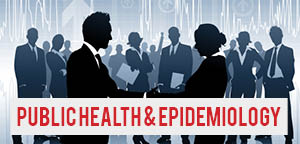
Recombinant DNA technology, joining together of DNA molecules from two different species that are inserted into a host organism to produce new genetic combinations that are of value to science, medicine, agriculture, and industry. Recombinant DNA (rDNA) molecules are DNA molecules formed by laboratory methods of genetic recombination (such as molecular cloning) to bring together genetic material from multiple sources, creating sequences that would not otherwise be found in the genome. Recombinant DNA technology is used extensively in research laboratories worldwide to explore myriad questions about gene structure, function, expression pattern, regulation, and much more. Molecular cloning is the laboratory process used to create recombinant DNA. It is one of two most widely used methods, along with polymerase chain reaction (PCR), used to direct the replication of any specific DNA sequence chosen by the experimentalist. Recombinant DNA techniques are also a cornerstone of the biotechnology industry. This session covers all the aspects in Recombinant DNA Technology

- Track 17-1Southern Blot
- Track 17-2DNA sequencing of a gene
- Track 17-3PCR (polymerase chain reaction)
- Track 17-4Cloning
- Track 17-5Enzyme Mapping
- Track 17-6Genome Identification
- Track 17-7Gene Manipulation
Microorganisms plays an important role in our day to day life, it has become our part and parcel of our life. Microbiome is an essential component of immunity and a functional entity that influences metabolism and modulates drug interactions. It has been known since long time that microorganisms in the human body play an important role in maintaining human health. Certain microbes can help us in the fight against other microbes. Microbes are a source of antibiotics and vaccines. They are found in human and veterinary medicine, that are used to treat and prevent infectious diseases. The microbes that normally live in association with humans on the various surfaces of the body (called the normal flora), such as Lactobacillus and Bifidobacterium, are known to protect their hosts from infections and otherwise promote nutrition and health. They have both positive and negative effects of health in the animal kingdom. This track covers all the advantages and disadvantages of Microbes

- Track 18-1Microbial Genomics
Theoretical and Practical aspects of Microbiology session cover the research topics like basic microbiology, experimental microbiology and case studies. It also includes mathematical modelling of organisms, Genomic Studies, Recombinant DNA Technology studies, Microbial Strain improvement, identification, isolation, improvement, Genome sequencing of new Microorganisms, Drug analysis in microorganisms, discovering the proteins and enzymes of microorganisms and many more studies. Practical approach is nothing but the implementation of theoretical hypothesis to obtain its expects
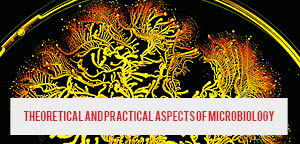
Microbiology & Molecular Biology is session for their microbial and molecular studies. Microbiology is the study of microorganisms and their activities (whether unicellular, multicellular or acellular). Molecular Biology deals with the basis (structure and function) of all biological interactions between biomolecules (nucleic acids and proteins) in various cell systems. It also includes topics like gene expression and regulation, pathogenicity and virulence, physiology and metabolism, synthesis of macromolecules (proteins, nucleic acids, lipids, polysaccharides, etc), cell biology and subcellular organization, membrane biogenesis and function, traffic and transport, cell-cell communication and signaling pathways, evolution and gene transfer of microorganisms

- Track 20-1Molecular Genetics
- Track 20-2Prokaryotic and Eukaryotic Organisms
- Track 20-3Microbial Genetics
- Track 20-4Microbial Ecology
A vaccine is a biological preparation that provides active acquired immunity to a particular disease. A vaccine typically contains an agent that resembles a disease-causing microorganism and is often made from weakened or killed forms of the microbe, its toxins, or one of its surface proteins. The agent stimulates the body's immune system to recognize the agent as a threat, destroy it, and to further recognize and destroy any of the microorganisms associated with that agent that it may encounter in the future. Vaccines can be prophylactic or therapeutic. Vaccines can be produced in four stages Antigen generation, cultivating or isolating the Antigens, Antigen purification, Adjuvant additions & Vaccine formulation. An antibiotic is a type of antimicrobial drug used in the treatment and prevention of bacterial infections. They may either kill or inhibit the growth of bacteria. A limited number of antibiotics also possess antiprotozoal activity. Antibiotics are not effective against viruses such as the common cold or influenza; drugs which inhibit viruses are termed antiviral drugs or antivirals rather than antibiotics. Antiviral drugs are a class of medication used specifically for treating viral infections rather than bacterial ones. Most antivirals are used for specific viral infections, while a broad-spectrum antiviral is effective against a wide range of viruses. Antibiotics are not the same as vaccines. Some antibiotics act by killing the bacteria while others prevent the bacteria from multiplying, leaving your own immune system to 'mop them up'. Vaccines are used to prevent infection, particularly viral infections. Antibiotics can be produced in four stages like Microbial Culture preparation, Fermentation, Isolation & Purification of antibiotics, Antibiotics refining, Quality Control of Antibiotics. This session covers the researches in Vaccines and Antibiotics

Virology

Microbial Chemistry is the study of metabolism inside the microorganisms for its survival and products. Microorganisms has 4 growth stages such as lag phase, Growth phase, Stationary Phase and Death Phase. During the Growth phase microorganisms produce metabolites for its growth and reproduction but in stationary phase they produce metabolites for its survival and other secondary products like enzymes, proteins, peptides which has many benefits, i.e. In Industries these microorganisms are cultivated in larger quantity to get these secondary metabolites or by-products. So Microbial chemistry is the study to know depth of the microorganisms, Microbial Kinetics and their biochemistry. Microbes metabolize the substrate to obtain energy and nutrients, this study also includes their Microbial Proliferation and nurturing of a cellular steady state by up taking and usage of inorganic and organic compounds
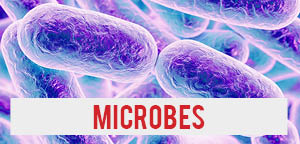
- Track 26-1Microbial Nutrient Cycles (Nitrogen, Sulfur, Carbon, Phosphorous, Iron)
- Track 26-2Microbial growth Kinetics
- Track 26-3Microbial Metabolism
- Track 26-4Methylotrophy
- Track 26-5Microbial Biochemistry
- Track 26-6Geomicrobiology

Clinical Microbiology is a branch of medical science concerned with the prevention, diagnosis and treatment of infectious diseases. Moreover, this field of science is concerned about various clinical applications of microbes for the improvement of health. There are four kinds of microorganisms that cause infectious disease: bacteria, fungi, parasites and viruses. In this session we can discuss in border view of microbiological aspects of human and animal infections and infestations and in particular their etiological agents, diagnosis, and epidemiology.
